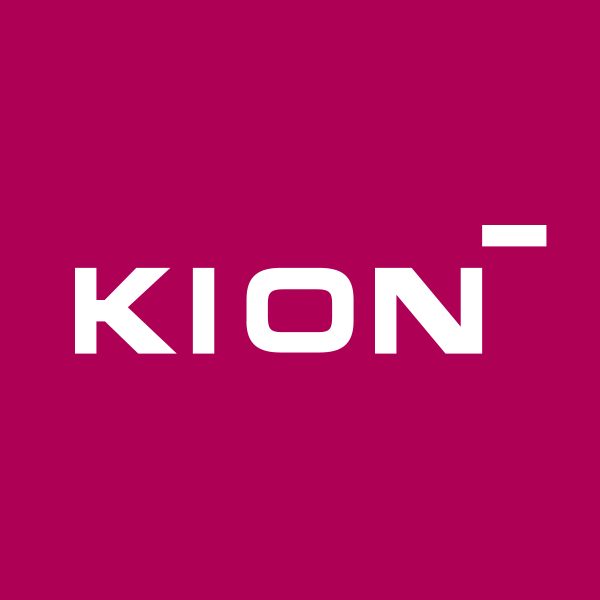
Kion Group AG
XETRA:KGX


| US |

|
Johnson & Johnson
NYSE:JNJ
|
Pharmaceuticals
|
| US |

|
Berkshire Hathaway Inc
NYSE:BRK.A
|
Financial Services
|
| US |

|
Bank of America Corp
NYSE:BAC
|
Banking
|
| US |

|
Mastercard Inc
NYSE:MA
|
Technology
|
| US |

|
UnitedHealth Group Inc
NYSE:UNH
|
Health Care
|
| US |

|
Exxon Mobil Corp
NYSE:XOM
|
Energy
|
| US |

|
Pfizer Inc
NYSE:PFE
|
Pharmaceuticals
|
| US |

|
Palantir Technologies Inc
NYSE:PLTR
|
Technology
|
| US |

|
Nike Inc
NYSE:NKE
|
Textiles, Apparel & Luxury Goods
|
| US |

|
Visa Inc
NYSE:V
|
Technology
|
| CN |

|
Alibaba Group Holding Ltd
NYSE:BABA
|
Retail
|
| US |

|
3M Co
NYSE:MMM
|
Industrial Conglomerates
|
| US |

|
JPMorgan Chase & Co
NYSE:JPM
|
Banking
|
| US |

|
Coca-Cola Co
NYSE:KO
|
Beverages
|
| US |

|
Walmart Inc
NYSE:WMT
|
Retail
|
| US |

|
Verizon Communications Inc
NYSE:VZ
|
Telecommunication
|
Utilize notes to systematically review your investment decisions. By reflecting on past outcomes, you can discern effective strategies and identify those that underperformed. This continuous feedback loop enables you to adapt and refine your approach, optimizing for future success.
Each note serves as a learning point, offering insights into your decision-making processes. Over time, you'll accumulate a personalized database of knowledge, enhancing your ability to make informed decisions quickly and effectively.
With a comprehensive record of your investment history at your fingertips, you can compare current opportunities against past experiences. This not only bolsters your confidence but also ensures that each decision is grounded in a well-documented rationale.
Do you really want to delete this note?
This action cannot be undone.

| 52 Week Range |
30.64
51.36
|
| Price Target |
|
We'll email you a reminder when the closing price reaches EUR.
Choose the stock you wish to monitor with a price alert.

|
Johnson & Johnson
NYSE:JNJ
|
US |

|
Berkshire Hathaway Inc
NYSE:BRK.A
|
US |

|
Bank of America Corp
NYSE:BAC
|
US |

|
Mastercard Inc
NYSE:MA
|
US |

|
UnitedHealth Group Inc
NYSE:UNH
|
US |

|
Exxon Mobil Corp
NYSE:XOM
|
US |

|
Pfizer Inc
NYSE:PFE
|
US |

|
Palantir Technologies Inc
NYSE:PLTR
|
US |

|
Nike Inc
NYSE:NKE
|
US |

|
Visa Inc
NYSE:V
|
US |

|
Alibaba Group Holding Ltd
NYSE:BABA
|
CN |

|
3M Co
NYSE:MMM
|
US |

|
JPMorgan Chase & Co
NYSE:JPM
|
US |

|
Coca-Cola Co
NYSE:KO
|
US |

|
Walmart Inc
NYSE:WMT
|
US |

|
Verizon Communications Inc
NYSE:VZ
|
US |
This alert will be permanently deleted.
 Kion Group AG
Kion Group AG
Kion Group AG
Investor Relations
Kion Group AG stands out in the world of intralogistics, operating as a powerhouse in the forklift truck and supply chain solutions markets. With roots tracing back to Germany, Kion has grown into a global entity, crafting machinery that moves goods within warehouses and factories—key players in the ballet of production and distribution. The company, forging ahead with technological prowess, offers a spectrum of products from standard pallet handlers to advanced automated warehouses. It is through the synthesis of engineering brilliance and customer-centric service that Kion has solidified its prominence. The company's stature is bolstered by an extensive network that reaches beyond traditional borders, showcasing its prowess in efficiently moving goods where they are needed most.
Revenue streams for Kion pivot on two primary axes: industrial trucks and services, and supply chain solutions. The industrial trucks and services sector serves a vast array of industries, providing forklifts and warehousing technology alongside maintenance and fleet management services—a cornerstone that ensures customer operations run seamlessly. On the supply chain solutions end, Dematic, a pivotal subsidiary, takes the lead, integrating automation and IT to enhance productivity in warehouses and distribution centers. Through sales and service efficiencies, Kion thrives on an economic model that capitalizes on initial equipment sales, sustained by long-term service agreements and technological upgrades. It's this strategic orchestration of product and service that propels Kion Group AG's economic engine.

Kion Group AG stands out in the world of intralogistics, operating as a powerhouse in the forklift truck and supply chain solutions markets. With roots tracing back to Germany, Kion has grown into a global entity, crafting machinery that moves goods within warehouses and factories—key players in the ballet of production and distribution. The company, forging ahead with technological prowess, offers a spectrum of products from standard pallet handlers to advanced automated warehouses. It is through the synthesis of engineering brilliance and customer-centric service that Kion has solidified its prominence. The company's stature is bolstered by an extensive network that reaches beyond traditional borders, showcasing its prowess in efficiently moving goods where they are needed most.
Revenue streams for Kion pivot on two primary axes: industrial trucks and services, and supply chain solutions. The industrial trucks and services sector serves a vast array of industries, providing forklifts and warehousing technology alongside maintenance and fleet management services—a cornerstone that ensures customer operations run seamlessly. On the supply chain solutions end, Dematic, a pivotal subsidiary, takes the lead, integrating automation and IT to enhance productivity in warehouses and distribution centers. Through sales and service efficiencies, Kion thrives on an economic model that capitalizes on initial equipment sales, sustained by long-term service agreements and technological upgrades. It's this strategic orchestration of product and service that propels Kion Group AG's economic engine.





























 You don't have any saved screeners yet
You don't have any saved screeners yet
